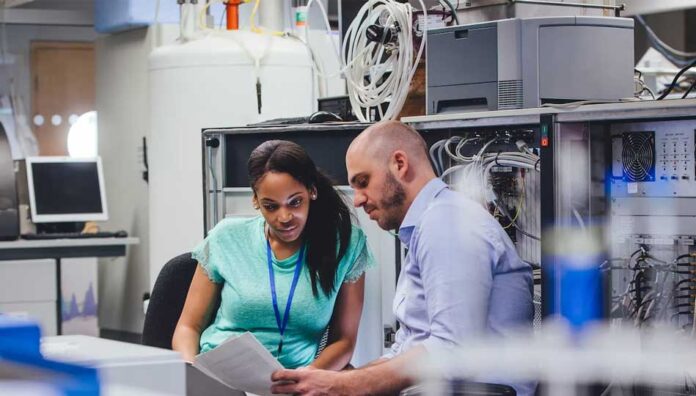Table of Contents
Patient diagnosis is a detailed and complex process and requires the collaboration of several healthcare professionals. Assessment of a patient’s health status involves judgment of clinical signs and symptoms, gathering information regarding the nature and history of the presenting illness, and using elaborate methods and techniques to come to a conclusion.
The introduction of technology in every corner of the healthcare system has made things easier, ranging from data management to treatment plans. Medical professionals are enabled to deal with a higher number of patients in a shorter period.
The incorporation of technology continues to make the treatment process more rapid, precise, and efficient and eliminates the chances of human error.
How has tech changed the way we view the healthcare sector?
Technology has altogether revolutionized the healthcare offered by hospitals. It has made native and imported information easily accessible and readily available, with simpler navigation through the data pool. Routine tasks have been automated to enhance workflow. Moreover, sharing information among multiple healthcare professionals could not have been easier.
New technologies are being developed every year that promise to change how healthcare is delivered forever. A 2017 research by the Healthcare Information and Management Systems Society shows that the application of technology in healthcare will continue to grow in the near future.
Here are 5 ways technology is revolutionizing the healthcare sector.
Laboratory Information Systems
There is always a possibility of human error, even when it comes to the best-trained professionals. A LIS software like NovoPath can provide doctors, nurses, receptionists, lab technicians, and support staff with streamlined access to patient data, lab reports, and imaging results, improving accuracy and saving time. NovoPath not only manages but also automates processes like patient registration, ordering of tests and labs, reporting of results, and error-free billing. It also enables the hospital management staff to track and manage inventory and make reports. The best thing about NovoPath is that it is designed in a way that allows it to integrate seamlessly with other pre-existing healthcare systems, such as EHRs and practice management systems. This way, patient information can be easily shared and accessed across the healthcare system, improving patient outcomes.
Furthermore, advanced care management software now provides the capability for patient-based mobile access to reporting systems, allowing patients to provide records or documentation in downtime to allow for more optimized care – further from this, systems can now use OCR to ensure that all documentation stored is of the regulatory standard to support legal and ethical responsibilities of healthcare providers.
Supply Chain Management
Technology can improve supply chain management in hospitals in several ways:
Automated Inventory Management
Hospitals can use technologies such as barcoding and RFID systems to track inventory in real-time, reducing the risk of stockouts and overstocking.
Predictive Analytics
Predictive analytics uses statistical models, machine learning algorithms, and data mining techniques to analyze current and historical data to predict future outcomes. It can help hospitals anticipate supply needs based on historical data, allowing them to manage inventory levels and reduce waste proactively.
Electronic Data Interchange (EDI)
EDI systems allow the computer-to-computer exchange of data, streamlining communication between hospitals and suppliers, reducing the risk of errors, and increasing efficiency.
Warehouse Management Systems (WMS)
Hospitals can use WMS to optimize storage and retrieval processes, reducing the time and resources required to manage inventory.
Transportation Management Systems (TMS)
Hospitals can use TMS to optimize delivery routes and schedules, reducing transportation costs and improving delivery times. Overall, technology can help hospitals to improve supply chain visibility, efficiency, and responsiveness, leading to better patient care and lower costs.
Medical Imaging
Traditional as well as recent advances in medical imaging, such as X-rays, MRIs, CT scans, ultrasounds, PET scans, and scintigraphy, among others, improve patient care by providing healthcare professionals with intuitive visual displays about the patient’s anatomy and physiology, helping specialists and resident doctors to diagnose a variety of conditions ranging from seasonal infections and fractures to complex tumors, autoimmune diseases, and congenital anomalies. Most of these diagnostic techniques are non-invasive, eliminating the use of injections or incisions. This increases patient comfort and compliance.
Newer technologies such as CBCT (Cone Beam Computed Tomography) produce three-dimensional images to further improve the accuracy of diagnosis. Specialized scans employ contrast scans to study inconsistencies with the regular activity of the brain and blood vessels. Barium swallow and barium enema are widely-used contrast imaging techniques to identify esophageal and intestinal disorders.
Artificial Intelligence (AI) and Augmented Reality (AR)
Artificial Intelligence (AI) involves the development of algorithms and programs that can perform tasks that usually require human intelligence and skill, such as learning, problem-solving, and pattern recognition. It has applications in various aspects of medical care, including diagnosis, treatment planning, drug discovery, and clinical decision support. Modern AI software can analyze large amounts of medical data, such as medical images and patient records, and provide insights that can assist healthcare professionals in making more accurate diagnoses and better treatment decisions. Consequently, it lowers human workload.
Google’s Deepmind recently developed an AI algorithm for breast cancer analysis which outperformed human radiologists by a surprising 11.5% when tested on pre-cleared data. This is just one of several examples of AI transforming the healthcare sector across avenues previously unknown to man.
Augmented Reality (AR), on the other hand, refers to the integration of digital information with the user’s physical environment. AR technology enhances one’s perception of reality by adding computer-generated graphics, sounds, and other sensory inputs to the real-world environment. It is used mainly for surgical and procedural training, patient education, and treatment planning. AR can provide medical professionals with real-time information and guidance during procedures, such as overlaying images and anatomical models onto the patient’s body. It can also educate patients about their conditions and treatments, helping them better understand and manage their health.
3D Printing
3D printing is revolutionizing treatment and healthcare in hospitals by providing new and innovative solutions to some of the most challenging medical problems. This technology enables the creation of customized medical devices, implants, and prosthetics tailored to individual patients’ unique needs.
It also allows for producing anatomically precise surgical models, such as bones, organs, and blood vessels, with data obtained from CT scans and MRIs. This enables healthcare providers to better understand the patient’s condition during diagnostic procedures. These models also enable doctors to practice and plan complex procedures with greater accuracy and precision. Furthermore, it can be used to produce low-cost, disposable surgical instruments, reducing the risk of cross-contamination and the incidence of post-op complications, all at a lower cost.
The future holds the potential to use 3D printing to revolutionize drug discovery through the production of personalized medicines. By printing precise doses of medication in real-time, doctors can better control and monitor treatment regimens for their patients. Moreover, research is underway to explore the possibility of replacing faulty organs and tissues with bio-printed organs. Overall, 3D printing is transforming how medical care is delivered, making it more accessible, affordable, and effective.
Conclusion
As technology advances, hospitals are embracing its power to revolutionize patient care. The amalgamation of medicine and surgery with technology is producing a new era of healthcare. That is more accessible, personalized, and effective. Technology is helping healthcare professionals diagnose and treat patients more accurately. And make informed decisions by providing new and innovative solutions. It is a future where patients receive care tailored to their unique needs. With each new technological breakthrough, the horizon of medical care expands, bringing us closer to a world where every patient receives the care they deserve.















